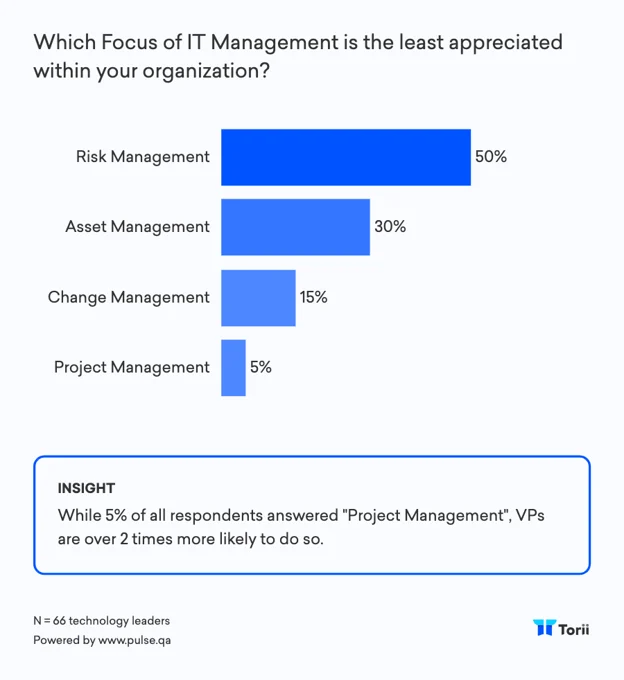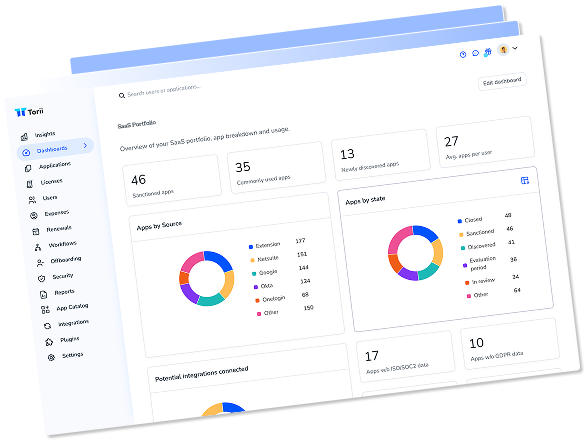IT has a misinformation issue. Let me explain.
How many of your coworkers could accurately answer the question “what does IT do?”
How about “What is IT Management?” — even less?
What about the worst of them all, “What does an IT professional look like?”
Isn’t it frustrating? Out of all the roles in modern business, IT is given the most prominent stereotypes despite their co-workers having the least understanding of their role.
IT management is an integral and strategic function. It broadly involves the administration, optimization, and organization of IT assets and processes at an organization—yet most just think of them as the “tech help hotline.” And when IT isn’t just viewed as support staff, they’re frequently perceived as socially inept stereotypes that only emerge from the dimly-lit server dungeon to tell you “no” to that new application.
This reductive picture of IT is propped up in pop culture, but it shouldn’t be.
The responsibility of keeping their organizations running falls on their shoulders. As cloud applications overrun their organizations, they’re the last line of defense to save you from yourself. So what can be done?
There are a ton of assumptions made about what IT Management is—some are misunderstandings, but some are straight-up myths.
Let’s dive in to clarify the role of IT, bust some myths in the process, and discuss how IT’s role is evolving.
Myth #1: IT Management is a catch-all for anything that is computer related
Broken laptop? Call IT. Need access to something? Call IT. A giant, evil robot is attacking your city? Call… okay, maybe call someone other than IT (though, it’s still likely they’d create a support ticket).
Employees view IT as the tech-problem solvers of their organizations. Even when a simple Google search could solve the problem, employees opt to Slack IT. While many portrayals of IT paint them as snarky, the truth is that IT professionals are earnest and just want what is best for their organization. (But darn, if they would just try turning it off and on again…)
Despite that, IT is not just tech support. While that’s part of the job, they don’t exist with the lone function of responding to support tickets. In fact, despite the likelihood that IT can most likely solve most (if not all) tech problems—doing so comes at a tremendous opportunity cost. Time is limited, and they have a lot more to do that their co-workers may not actively notice.
IT management strategically plans for the organization’s entire digital infrastructure. As the headcount of that organization grows (both in headcount and physical distance), so does the complexity of that infrastructure. See where I’m heading with this?
From implementations of company-wide software to hardware distribution and upkeep, significant planning is not only important; it’s necessary—it’s the only thing that keeps an organization running.
The pandemic made that abundantly clear. As organizations moved remote, the responsibility of keeping those organizations running rested on the shoulders of IT, from deploying applications that maintained collaboration to organizing, ordering, and shipping entire work-from-home workstations.
That swift action at the start of the pandemic was not a rare occurrence for IT; they’re performing this function consistently and non-stop through an organization’s day-to-day. Add on the rise of SaaS applications, and SaaS management has become a critical part of IT management.
IT’s responsibilities are vast in scope and highly complex.
The rest of the organization lazily assuming that IT is just tech support, mentally grouping them in with their tv stereotypes, is not uncommon—but it is unfortunate.
IT deserves more credit for the complexity of its role and the importance it plays in keeping their organizations running.
Myth #2: IT governance slows us down
Risk management through IT governance is an organization’s most underrated and underappreciated function.

Without IT governance, your organization would be a lawless land of risk—picture Mad Max, but with fewer monster trucks… but more pyrotechnics.
While IT governance might typically have the word “no” associated with it, it’s a critical function within organizations of every size. Rather than slowing down their organization, IT enables their organization to maintain the high speed of modern business through IT governance.
Are you going through your day-to-day thinking about how you’re putting your company’s data at risk? No? Well, IT is, and IT governance is there to save you from yourself.
The rules and regulations IT formulates are a direct result of considering how employees work, the risks associated with their work, and the best ways to negate that risk.
That’s especially true when you consider the risk associated with offboarding. Our research has found that 76% of IT leaders believe offboarding is now a serious security risk. Why? The decentralized nature of SaaS applications.
When Greg leaves the company, while most of the organization may just have to worry about wishing him well on LinkedIn, IT is scrambling to ensure that he no longer has access to any applications after his departure. That has become much more difficult due to Shadow IT stemming from the ease in implementing SaaS applications.
Without proper IT governance, offboarding could mean sensitive company information leaking out into the world through ex-employees. Greg may not mean to leave behind security vulnerabilities, but it’s IT’s job to make sure he doesn’t go through a proper IT governance structure.
If employees find themselves frequently running into the rules and regulations IT has put into place for IT governance, there’s a high likelihood they’re playing with fire (not the Mad Max kind) and IT governance is in place to keep them (and your organization) from getting burnt.
Myth #3: IT doesn’t contribute toward revenue
Do you use Salesforce? How about Slack? Email?
Then IT contributes towards revenue.
I’ve worked in tech for many years now, and the most successful and efficient sales and marketing teams I’ve worked with owe the IT team their just desserts.
That all-star account executive that just brought in a glamorous deal? Guess who onboarded him with the right tools to get the job done.
If they’re doing their job well, you’ll never notice how responsible they are for the graph going up—and if they stopped doing their job altogether, you’d see revenue grind to a halt.
If you think of a company as a blossoming nation, IT is like the underlying infrastructure that keeps it running—the roads, bridges, and seaports that keep it moving.
The modern business is infinitely reliant on its digital workplace, and the digital infrastructure, established through IT management, is the foundation of revenue growth.
Through IT planning and strategizing, your sales and marketing teams can focus on generating results rather than figuring out how to communicate and collaborate.
In a “move fast and break stuff” culture especially, IT is the team fixing what’s broken—or at times, keeping it from breaking.
Myth #4: The decentralization of SaaS will kill the role of IT.
While the decentralization of SaaS has certainly made IT’s role more complicated, it’s not going anywhere.
SaaS sprawl is a real problem—but IT is the only team qualified to tackle it.
Yes, IT management is evolving as teams have started managing their own SaaS applications—but this is creating a once-in-a-career opportunity for IT teams.
IT’s ability to tame the beast of SaaS Sprawl will elevate them to the level of recognition that’s been well deserved for far too long—breaking the myths that have long plagued their role.
After all, there’s no better way for the CEO to learn your name than when you’re saving millions of dollars by optimizing your organization’s tech stack.
That’s only possible if they use the proper tools to gain greater visibility.
The IT leaders who are already utilizing SaaS Management Platforms (SMP) are ahead of the curve and starting to reap the rewards.
Through the real-time discovery tools that SMPs like the Torii Platform provide, they’re bringing Shadow IT to the light. They’re leveraging the accurate data it provides to understand app usage and more easily accomplish application rationalization.
They’re sitting at the eye of the storm and taking an active role in reducing costs, improving efficiency, and solving substantial problems for their organization.
But here’s the kicker—that’s always been the case.
IT Is More Than The Myths And Stereotypes
IT is silently powerful—they always have been.
The complexity that has long evaded the gaze of those outside IT is now starting to reach the day-to-day of those same co-workers. Employees are feeling like there are too many apps, finance is feeling like they’re too expensive, and the only team qualified to do anything about it is IT.
As IT management evolves to distribute technology better, further enabling the ingenuity that they’ve been accused of snuffing out—we’ll see the role of IT evolve.
That evolution will involve IT management grabbing SaaS sprawl by the horns and directing it towards greater results. That includes gaining greater visibility and gathering more accurate data to ensure they’re aware and able to act as the technology experts they are. That’s only possible with a SaaS Management Platform.
Similar to the move from paper to PC, this is another change in dynamic that IT will have to navigate for their organizations. SaaS isn’t going anywhere, but neither is IT—it’s time to get ahead of it before more myths arise.

